|
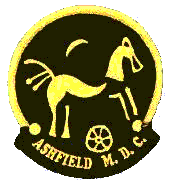
| |
|
THE
CHAIRMAN’S PRESENTATION |
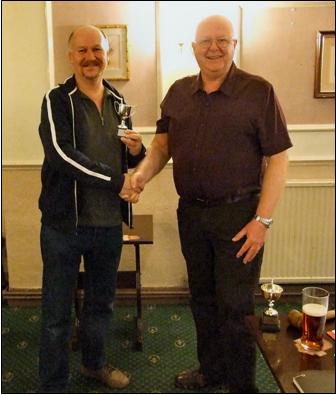 |
|
The
club chairman, Dave Hallam, is pictured presenting the cup for the
2011/2012 “Chairman’s Presentation” to Anthony James (AKA Postie)
The award is made to the member who, in the chairman’s opinion, has
contributed the most to the club in the past year or who has
remained interested and determined while showing the right sort of
Club Spirit.
|
FIND OF THE MONTH NOVEMBER, 2011
|
 |
Coin:-
Ivan Falconbridge.
Henry
short cross penny.
|

|
Artefact:-
Terry Hurt.
Roman brooch.
|

|
Most Unusual
Find:- Gavin Phillips.
Radio.
|
FIND OF THE MONTH
DECEMBER, 2011
|
|
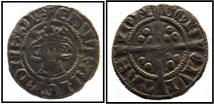 |
Coin:-
Dave Budding.
Edward1
long cross halfpenny.
|
|
Artefact:- Steve Smith. Roman disc brooch.
Most Unusual Find:- Dennis Brown. Miniature
pot doll's head. |
FIND OF THE MONTH JANUARY, 2012
Coin:- Terry Hurt. Roman bronze.
Artefact:- Terry Hurt. Watch fob.
Most Unusual Find:- Sprinkler tap. |
|
FIND OF THE MONTH
FEBRUARY, 2012 |
|
 |
Coin:-
Terry Hurt.
1898 half crown. |
|
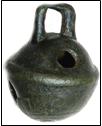 |
Artefact:- Dave
Rhodes. Crotal bell. |
|
 |
Most Unusual Find:-
Dave Budding. Plastic foot. |
FIND OF THE MONTH
MARCH, 2012
|
|
 |
Coin:- John Radford. Edward 111 half groat. |
|
 |
Artefact:- Steve Smith.
Roman trumpet brooch. |
|
 |
Most Unusual Find. "Lead contact lens" |
|
FIND OF THE YEAR
AWARDS, 2012/2013 |
|
Coin
John Wilkinson
Coenwulf silver penny. |
Artefact
Dave Budding
Palstave axe head. |
|
 |
 |
|
DETECTORIST
OF THE YEAR RESULTS. |
|
|
|
1. TERRY
HURT 90 POINTS |
|
Pos |
Name |
Pts |
|
Pos |
Name |
Pts |
|
Pos |
Name |
Pts |
| 2 |
John Radford |
44 |
|
3 |
Dennis Brown |
41 |
|
4 |
John Gough |
36 |
| 5 |
Dave Budding |
28 |
|
6 |
Jeff Oscroft |
27 |
|
7 |
Dave Hallam |
24 |
| 8 |
Steve Smith |
20 |
|
9 |
John Wilkinson |
15 |
|
10 |
Neil Tryner |
12 |
| 11 |
Derek Battle |
12 |
|
12 |
Gavin Phillips |
11 |
|
13 |
Dave Rhodes (Joint) |
10 |
| 13 |
Ivan Falconbridge (Joint) |
10 |
|
15 |
Tony Elliott |
8 |
|
16 |
Carol Rhodes |
6 |
| 17 |
June Reedman |
5 |
|
18 |
Sylvia Tryner |
4 |
|
19 |
Anthony James (Joint) |
2 |
| 19 |
Bill Severn (Joint) |
2 |
|
19 |
Alan Roberts (Joint) |
2 |
|
22 |
Tony Warren |
1 |
|
|
CONDER TOKENS
|
|
Conder Tokens, also known as 18th., Century
Provincial Tokens, were first minted in 1787
by the Parys Mining Company who mined copper
ore in Anglesey. They had copper and access
to mints and started to mint their own
penny and halfpenny tokens to meet the needs
of Anglesey where there was little low value
coinage in circulation. The shortage of
small change at this time was not confined
to Anglesey and the practice of minting
token money soon spread to the mainland.
Conder tokens are named after James Conder a
draper and haberdasher who was also an
eminent numismatist. He was the first to
catalogue the 18th., century tokens, he also
issued tokens himself, the scenes of Ipswich
series was engraved by John Milton one of
the foremost engravers of the period.
Because Conder Tokens were minted
independently of government, the creators of
these tokens had the freedom to make
political statements, social commentary,
honour great men, ideals, great events, or
just advertise their businesses. Thousands
of varieties of tokens were minted, many are
beautiful and intricate works of art. |
|
 |
 |
|
Cronebane (Wicklow) copper Conder halfpenny
token 1789. Obverse: Bust of Bishop Blaze
with crook to right: "CRONEBANE HALFPENNY".
Reverse: Shield of arms with a windlass
crest: "ASSOCIATED IRISH MINE COMPANY 1789".
Edge inscription: "PAYABLE AT CRONEBANE
LODGE OR IN DUBLIN. |
|
|
|
DISPLAY CASE. |
|
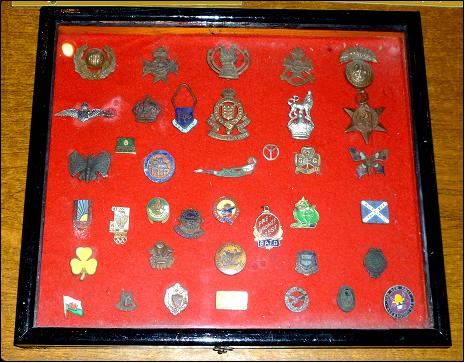 |
|
This superb display
case of civil and military badges
was made by club member, Dennis
Brown.
Dennis brought the case to the
December club meeting and it was
viewed with great interest by the
members present. This is but one of
his themed display cases of finds.
|
|
RARE DENARIUS |
|
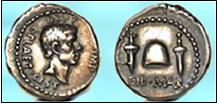 |
After the assassination of Julius
Caesar Brutus fled to Greece whilst
there he founded a mint. Only
seventy two coins have been found
with EID MAR on them. Could one have
made it to Britain and then lost,
just waiting for some lucky
detectorist to find it?
This coin
realised £350, 000 at a recent
auction. |
|
|
|
£150,000 BUCKLE! |
|
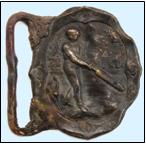
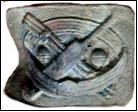
 |

THE BARBADOS
BUCKLE
In
May, 2012, Bonhams are holding a
sporting memorabilia auction at
Chester. Featured in the sale is
the Barbados buckle, expected to
realise £100,000-£150,000. The
buckle was found by metal
detectorist Clive Williams, a
retired advertising consultant,
whilst on holiday near the River
Tweed on the Scottish Borders.
When he cleaned his find he
found on it the figure of a
slave being bowled out at
cricket. Researching the buckle
with the help of the M C C,
National Portrait Gallery, Kew
Gardens and The British Museum
it was identified as having a
mixed race man with a Navy slave
chain around his neck playing
cricket with an unspliced bat
and set against a Barbados
background, probably in the
1780s. The three stumps as
depicted on the buckle were only
introduced in 1777, before then
the wicket consisted of just two
stumps.
The buckle has featured on
Barbados and other West Indian
postage stamps also on gold and
silver coins issued for Barbados
by the Royal Mint. Similar
buckles are fairly common finds
by detectorists, usually they
have cricket balls, bats and
stumps on them. Football themed
buckles are also found.
Check your buckles - who knows!
|
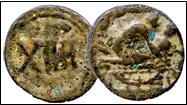
|
SPINTRIA
OR
BROTHEL TOKEN
|
|
This token was found on the
River Thames foreshore at
Putney Bridge, London by a
metal detectorist. It has
been dated to the reign of
Tiberius in the first
century A.D. The name given
to such a token is a
Spintria, this one shows a
man and a woman on a couch
during an act of a sexual
nature. The reverse side has
the Roman numerals for 14 on
it. No one knows if such
tokens were used in brothels
to pay for services or if
they were gaming tokens used
in an exotic board game.
This is thought
to be the only token to have
been found in Britain,
although many have been
found in other regions of
the Roman Empire. The demand
for Spintriae by collectors
is strong, prices for
individual tokens ranging
from £300-£15,000 at
auction. Spintriae have been
found depicting other sexual
acts and with numerals
ranging from 1 to 16 on
them, it is thought the
numbers represented the
value in asses. At the time
16 asses made one denarius.
Anyone wishing to see other
examples of these tokens can
do so by visiting, on the
internet, Jeffrey Fishburn
and reading his article, “Is
That A Spintria In Your
Pocket, Or Are You Just
Pleased To See Me?” Just
Google, (www.scribd.com/doc.51228927/SPINTRIAE).
Another site with examples
of spintriae is on Wikipedia
at http:/en.wikipedia.org/wiki/spintria.
*** |
|
COMMITTEE
FOR 2012—2013 |
|
CHAIRMAN/SITE SEC. |
SECRETARY |
TREASURER |
|
 |
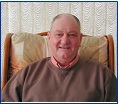 |
 |
|
Dave
Hallam |
John
Gough |
Mary
Severn
|
|
SEARCH SECRETARY |
COMMITTEE and LOTTERY |
COMMITTEE |
|
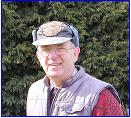 |
 |
 |
|
Jeff Oscroft |
Pat Walker |
John Radford |
|
In addition to his
position as chairman
Dave Hallam is assisting
as a site secretary. |
|
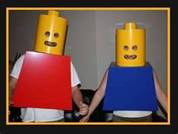
|
Graham and June
Reedman are also
committee members.
June is the search
marshal with
responsibilities for
the conduct of
searches.
They both are shy
and declined to have
their photographs
taken requesting
that caricatures be
used to represent
each of them.
After weeks of
browsing the web and
various books,
including the Kama
Sutra, it was
unanimously decided
that the image on
the left was the
most accurate
likeness.
|
|
BUTTONS |
|
 |
For a number of
years John
Gough, has
collected the
small brass
advertising or
tailor's
buttons, like
the one
illustrated
here. Most of us
regard these
little buttons
as an annoyance
and more than
likely they are
consigned to the
hedge bottom or
junk box in
disgust.
Realising that
the buttons are
being degraded
by the minerals
and fertilizers
in the soil he
started to save
them, he is
recording them
individually and
researching the
tailors or
companies named
on them with the
intention of
writing a book
about them and
their buttons.
Would club
members please
save these
buttons in any
condition for
him with, if
known, a note of
the general area
where found. |
|
ENGINEERS
TOOL CHECKS
|
|
Part of a
longer
article by
Priscilla
Langridge
published in
1974 by Coin
Monthly
Most
engineering
companies
allocate to
each of
their
mechanical
engineers a
number of
tool check
tokens.
These are
generally
round and
coin-like
with a
punched hole
in them, and
are usually
marked with
the
engineers
personal
identification
number.
Generally
ten such
tool checks
are issued
to each
mechanic
when first
employed by
a company,
and
thereafter
he must
personally
account of
these. When
ever he
requires to
borrow a
tool from
the work
store he
must hand in
one of his
tokens for
each tool
required.
The storeman
places the
token either
on a rack or
on a cup
hook over
the borrowed
tools place,
and this
enables him
to keep a
check on
tools
borrowed. At
any time
necessary he
can tell who
has borrowed
a particular
tool. If the
tool is
loaned out
and is then
urgently
required
before its
return, it
can be sent
for as the
person
borrowing
can quickly
be traced.
Many
engineering
tools are
very costly
items and
using this
‘tool check’
system such
tools are
less likely
to be
misused or
mislaid. No
one is
considered
to need more
than ten
tools from
the stores
at any one
time.
STRICT
SECURITY.
Engineering
companies
have their
own
distinctive
‘tool
checks’
which they
have minted
to order,
and which
arrived from
the maker in
sealed bags,
and these
are guarded
as closely
as money!
Strict
security is
observed
over these
carefully
guarded
checks and
their
allocation.
It is the
practice for
an
engineer’s
clocking in
number to be
punched onto
each one of
the ten tool
checks
allocated to
him.
Generally
the
supervisor
or chief
chargehand
has either
his surname
or his
initials
punched onto
his checks,
whilst all
other
mechanics
under him
only their
personal
number. A
careful
record is
kept in a
book by the
storeman of
all the
employees’
names,
numbers and
initials
used on the
issued ‘tool
checks’.
Once a tool
is borrowed
by a
mechanic, he
becomes
responsible
for that
tool. When
finished
with he must
hand it in
personally
to the
storeman,
who will in
turn hand
back the
mechanic's
personal
check. Early
issues of
tool checks
appear
mainly to
have been
struck in
brass. All
pieces I
have so far
noted have
been
uniface,
having a
small hole
in them, and
bearing on
them the
name of the
issuing
engineering
company and
the words
TOOL CHECK.
Many of
today's
modern
issues are
made from a
brass alloy,
some from
aluminium,
but plastic
tool checks
are now used
by some
companies.
The
illustrated
uniface tool
check of C A
Parsons Ltd
is made of
brass and is
26 mm in
diameter. It
has a raised
outer rim
and in a
beaded
border and
bears the
engineer’s
clocking in
number. Due
to the
strict
security
enforced by
engineering
companies
over their
tool checks,
collectors
are likely
to find it
extremely
difficult to
obtain any
sample
specimen for
a token
collection.
Whenever
they are
obtainable,
and indeed
obsolete
issues are
occasionally
offered for
sale by
dealers, a
small
selection of
such pieces
make for
variety
amongst more
modern
tokens.
Together
with a brief
description
of the
engineering
company to
whom they
once
belonged,
details of
where minted
is
available,
and period
used will
add to their
interest.
|
FAMOUS
ENGINEER.
Charles
Parsons was
the founder
of C A
Parsons. He
was a famous
Tyneside
engineer and
in the year
1884 he
invented the
steam
turbine. The
Admiralty
showed no
interest in
his
invention so
he went
ahead and
built his
own ship THE
TURBINIA. In
1897 at the
Queen
Victoria's
Diamond
Jubilee
Naval Review
at Spithead
he sailed
his new ship
in and out
of the
majestic
lines of
battleships
at a
fantastic
speed of 34
½ knots. It
was after
this that he
received
contracts
for his
invention.
Parsons was
the son of
an Irish
peer and
studied
maths at
Cambridge.
In 1876 he
patented his
epicycloidal
engine which
was the
forerunner
to his steam
turbine. He
established
his own
engineering
works at
Heaton in
1889. His
steam
turbine
engines were
used in two
famous
ships, the
Lusitania
and the
Mauritania.
He was
appointed
head of the
electrical
department
of Clarke
and Chapmans.
The company
of C A
Parsons has
amalgamated
with a
number of
others
throughout
its history.
*** |
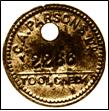 |
|
"CARTWHEELS" |
|
Occasionally a detectorists may find a “Cartwheel” penny or, more rarely, a two pence piece, in the fields. The unwieldy size and weight of the coins give rise to the question of why were they issued? A brief account is given below:- In the 18th., century the coinage in Britain was in poor condition. As many as two in three copper coins were debased or forgeries. Unable to combat this problem the Royal Mint closed on 1760. This naturally led to a shortage of coins in circulation and resulted in the spread of an unofficial token coinage issued by towns, businesses and private people. The limited purpose of these tokens, inconveniency and sometimes dishonesty on the part of the issuers caused a private citizen, Mathew Boulton, to attempt to solve the problem.
After numerous petitions the government decided to commission Mathew Boulton to produce 45 million new penny and two penny coins. He minted the new coins at his Soho Works in Birmingham, using eight of the new steam driven Boulton and Watts presses. Each press was capable of striking eighty coins per minute.
In order to defeat the forgers each copper coin was of the finest engraving and weighed 1oz for the penny and 2oz for the two penny piece. The weights being, in 1797, the value of the copper used in each coin. However they soon proved to be unpopular and were nicknamed “Cartwheels” due to their large size and weight. All “Cartwheel” coins have the one date, 1797 on them. The coins had a secondary use that of 1oz and 2oz.weights a few have been found with countermarks indicating they have been used for that purpose. The time saving by anyone dealing with large amounts of these coins would be the ability to just weigh them and receive a correct value instead of counting them by hand. “Cartwheels” have also been recorded as having been made into small boxes. This was done by hollowing out the obverse and reverse of two coins and joining them together by means of a screw thread so they could be unscrewed to reveal a small hiding place.
Mathew Boulton’s hatred of forgers did not stop at a new coinage but in 1799, at the age of 71, he led a raid on three premises used to produce counterfeit coins. Battering the doors down he and his men captured two of the forgers and recovered a large amount of counterfeit coins and coining equipment.
MATHEW BOULTON SOHO WORKS
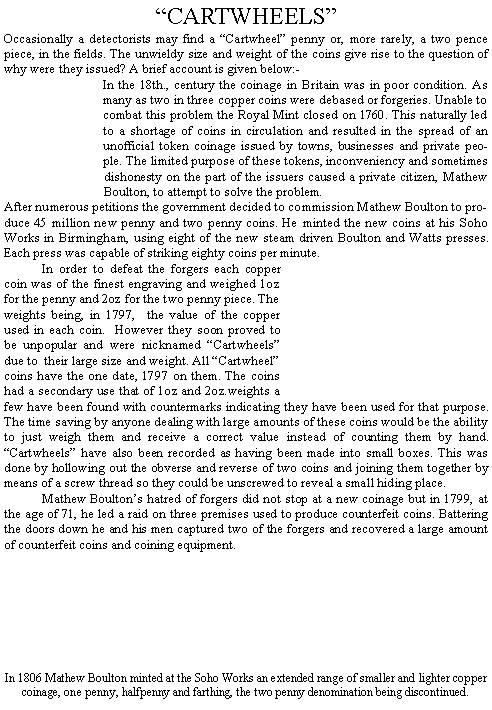 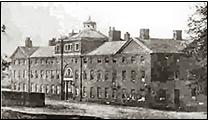 |
|
THE CARTWHEEL PENNY AND TWOPENCE |
|
|
 |
OBVERSE:-
Legend
in sunk
letters
on flat
rim
GEORGIUS
111 D:G
: REX.
Bust
left.
REVERSE:-Legend
in sunk
letters
on flat
rim
BRITANNIA
and the
date
1797.
Britannia
is
seated,
right,
with a
shield
on a
rock by
her side
are
waves
with a
three
masted
ship in
the
distance.
She
holds an
olive
branch
in her
right
hand in
the left
a
trident,
beneath
the
shield
and to
the
right
the word
SOHO. |
 |
|
In 1806
Mathew
Boulton
minted
at the
Soho
Works an
extended
range of
smaller
and
lighter
copper
coinage,
one
penny,
halfpenny
and
farthing,
the two
penny
denomination
being
discontinued.
***
|
THE ASHFIELD PICNIC AND METAL DETECTING CLUB! |
|
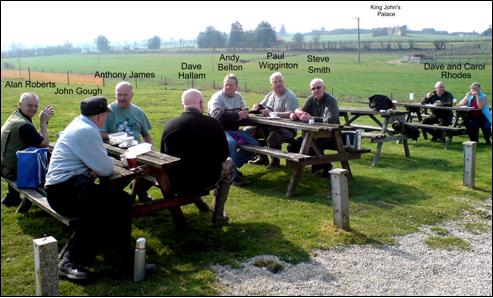
|
|
Some of the members of the Ashfield Metal Detecting Club in the picnic area of the Dog and Duck in Clipstone enjoying a drink and a snack. In the background can be seen the ruins of King John’s Palace that featured in the recent ‘Waste of Time Team’ programme. |
|
|
DON’T
HEDGEBOTTOM
IT—
GAVIN
IT!
For some
time now
Gavin
Phillips
has been
parking
his
Renault
Megane
on
search
sites
with a
bucket
on the
field
near the
car
boot.
This is
not to
answer
calls of
nature
but to
collect
scrap
metal
found
during
the
search.
Gavin
will
accept
all
kinds of
scrap
metal
from
ring
pulls
and
tinfoil
to
ploughshares
and
crashed
aeroplanes,
however
he says
that an
odd
piece of
gold or
silver
would
not be
turned
away!
The
first
picture
shows
Gavin’s
Megane
and his
trusty
bucket.
The
second
is of a
proud
Gavin
with his
first
ring
pull.
The
third
picture
is two
of
Gavin’s
ancestors
with
their
equivalent
of a
Renault
Megane.
If you
wish to
donate
scrap
metal
found on
your own
sites
Gavin
will be
delighted
to take
it off
your
hands
for a
small
fee! |
|
 |
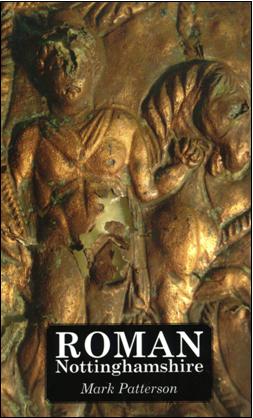 |
BOOKS
The best
book on
Roman
Nottinghamshire
I have
read!
This
book
sets
out, in
a very
entertaining
way, all
the
known
facts
about
Roman
Nottinghamshire.
Roman
Nottinghamshire
is an
authoritative
yet
accessible
examination
of the
history
of Roman
civilisation
in the
county.
Mark
Patterson
has
written
a
fascinating
narrative
of how
this
evidence
came to
light
and has
been (mis)interpreted
over the
years,
sometimes
leading
to
controversy.
He is
driven
by a
sense of
wonder
at the
influence
the
ghosts
of
ancient
Romans
continue
to exert
on
Nottinghamshire
and
seeks to
reveal
the
ancient
landscape
that
lies
just
under
the
modern.
The main
road,
the Foss
Way, is
well
known,
but
elsewhere
in the
county
there
were
towns,
villas,
forts,
and
temples.
Surprising
evidence
of the
Roman
occupation
continues
to come
to light
all
around
us,
including
finds of
coin
hoards,
metalwork,
pottery,
mosaics
and
pagan
curse
tablets.
This
paperback
book can
be
obtained
from
Five
Leaves
£11.99.
The Book
Depository
£9.08
free
delivery
and W H
Smith,
order on
line and
pick it
up at
the
branch
of your
choice,
£8.51.
The way
I
obtained
mine.
|
|
GREAT
SEAL OF
THE KING
OF
ENGLAND
Edward
1V
1461-1485. |
|
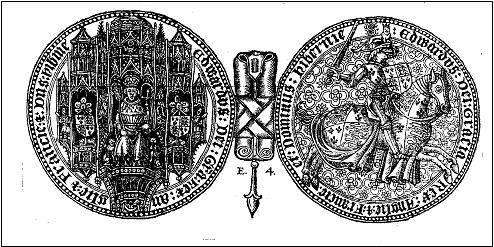 |
|
*** |
|
The
Ashfield
Metal
Detecting
Club
reserve
the
right
not to
be
responsible
for the
correctness,
completeness
or
quality
of the
information
in this
newsletter
and does
not,
necessarily,
support
the
views of
the
contributors.
*** |
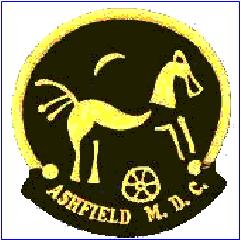
|
